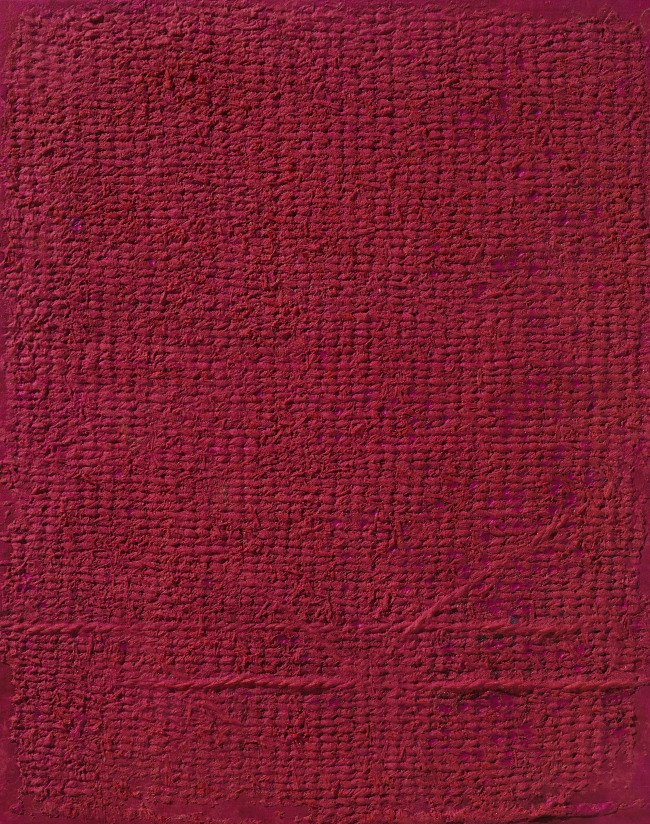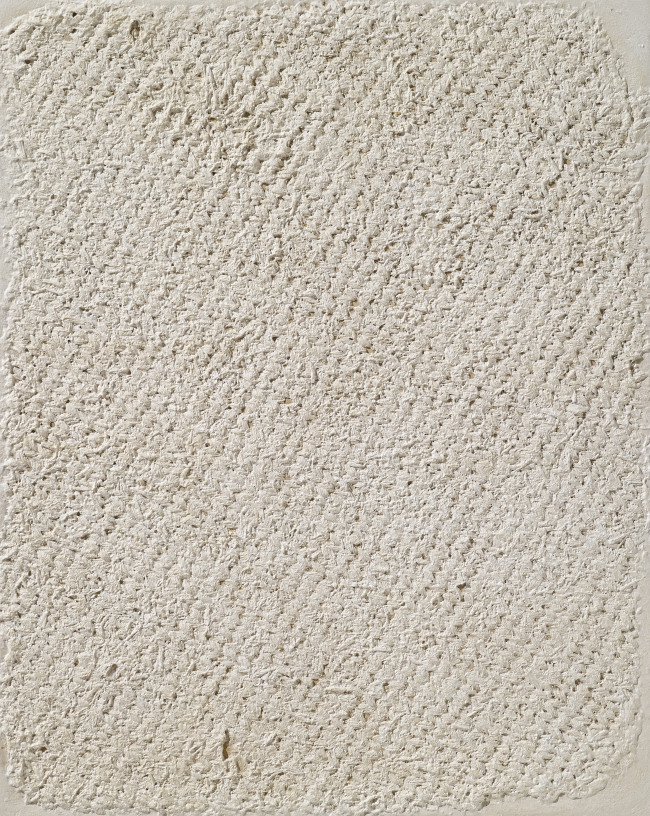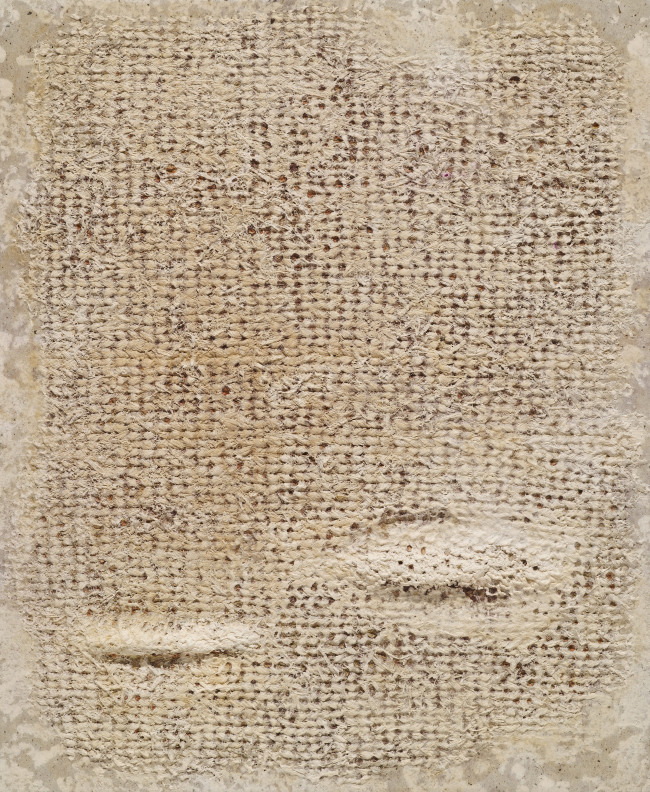한지 부조 30년 외길…박철 개인전 (헤럴드 경제) 2017-06-10
한지 부조 30년 외길…박철 개인전
기사입력 2017-06-10 09:27 |이한빛 기자
-청담동 쥴리아나갤러리, 6월 18일까지
Ensemble 17-7, 108.5x86cm, Mixed media with Korean paper, 2017. [사진제공=쥴리아나 갤러리]
[헤럴드경제=이한빛 기자] 한지를 이용해 다양한 기법을 실험해 온 박철(홍익대 미술대학원 교수) 화백의 개인전이 열린다. 2015년 다도화랑에서 개인전 이후 2년만이다.
서울 청담동 쥴리아나 갤러리는 박철의 개인전 ‘한지의 탐구 전통의 재창조’전을 5월 26일부터 6월 18일까지 개최한다. 전시에는 멍석을 메타포로 한 신작 20여점이 선보인다. 한지를 소재로 전통을 현대적으로 재해석 한 그의 작품은 패션과 트렌드 1번지인 청담동과 어울려 묘한 화음을 낸다.
Ensemble 17-5, 107x85cm, Mixed media with Korean paper, 2017 [사진제공=쥴리아나 갤러리]
박철 화백의 작품은 회화보다는 부조다. 석고나 시멘트 같은 재료로 몰딩을 만들고 그 위에 창틀이나 멍석, 바이올린 등을 올려 원하는 형태로 음각을 떠낸 다음, 그 위에 한지를 수십번 덧발라 양각으로 완성한다. 전시장에서 만난 박 화백은 “작품 하나가 완성되기까지 한달은 잡아야 할 정도로 물리적 시간이 필요하다. 고된작업이지만 작가라면 자신의 노하우나 미스터리가 깃들여져야한다. 장인정신을 가져야한다”고 강조했다.
박 화백의 한지 부조는 그 시작이 1980년대로 거슬러 올라간다. 윤진섭 미술평론가는 “한지 작업은 1970년대 초반에 비롯됐지만, 한지의 표현 매재적 가능성이 본격적으로 부상한 것은 1980년대 중반에 이르러서다”라며 “박철의 작업은 1980년대 중반 서구미술에 대응하기 위한 한국미술의 독자성과 문화 정체성에 대한 탐구와 맞아 떨어진다”고 했다.
Ensemble 16-1, 108x89cm, Korean Traditional paper, Natural dyes, 2016.[사진제공=쥴리아나 갤러리]
직접적인 계기가 된건 1980년대 중반 경상북도 임화댐 수몰지구를 방문하면서다. 서성록 안동대 미술학과 교수는 “수몰직전 고옥 마을에서 와당조각, 농기구, 멍석, 창틀을 면밀히 관찰하며 시작한 작품은 개발로 인해 수장돼버린 우리 자신의 모습이자 사라져가는 전통”이라고 설명했다.
근 30년동안 한지작업에 매진함에 대해 작가는 “한지는 작가가 무엇을 하려고 하든 얼마든지 변형이 가능하다. 수용적이고 수동적 매체이며 동시에 한국인의 정서와 같은 순수하고 담백한 맛이 있다”고 말했다. 또 보존성이 좋다는 것도 특징이다. “지천년견오백(紙千年絹五百ㆍ종이는 천 년을 가고 비단(캔버스)은 오백년 간다)이라는 말처럼 한지의 생명력은 강인하다”고 덧붙였다.
멍석을 캐스팅한 그의 작업에선 같은 패턴이 계속적으로 반복된다. 일견 단색화로도 보인다. 작가는 단색화와 연결성 보다는 ‘반복’이 한국문화의 한 패턴이라고 했다. “단색화의 주요 특징중 하나가 반복이다. 우리 전통도 그렇다” 서성록 교수는 “한지작업은 단색화를 맹아 시킨 미술로 우리 화단에 지대한 영향을 미친 영역이나 제대로 평가되지 못한, 앞으로가 더 기대되는 차세대 미술”이라고 평가했다.
Relief’s work after 30 years only way...
Park Chul Solo exhibition (Herald) 2017-06-10
Park Chul (Professor, University of Hongik, Graduate School of Fine Art Dept.), who experiment with various techniques using Korean paper hanji, he has sole exhibition. It has been only two years since his solo exhibition at Daido Gallery in 2015.
The Juliana Gallery(Cheongdam-dong, Seoul)will be held exhibition of Park Chul 's solo exhibition "The recreation of the tradition of exploring Hanji" from May 26 to June 18.In the exhibition, there are about 20 new pieces works with metaphor. His work, which reinterprets to Korean style tradition work into a contemporary way using Hanji, it would be a strange chord harmonizing with Cheongdam-dong area, which is fashion and trend 1.
Park, Chul is the work of relief rather than painting. His work process is made molding such as plaster and cement, and top of it he puts a window frame or straw mat, and a violin are placed on it. After that he placed the intaglio frame such as engraving in form and from embossing frame he puts on hanji top of it several times over it. Park, who met at the exhibition hall, his embassies to said that "It takes physical time to get a month to complete pieces. The art work is very hard, but if you want to be best artist then artist should know-how and, artist must to have mysteries of their work. It is craftsmanship. "
Artist Park’s Hanji relief’s work began to the 1980s.Yoon Jin-sup art Critic wrote that “Although the work of Hanji(Korean paper) originated in the early 1970s,hanji’spossibility of material as art expression it was only in the mid-1980s that the possibility of expressing Korean paper became full-fledged.” And Yoon also said that “Park's work is consistent with the quest for uniqueness and Korean art cultural identity and response in mid-1980s Western art.”
It is based on direct attempting to visit in Gyeongsangbuk-do imhwa dam the mid-1980s, which is flooded the earth. Seo,seongrok (Professor of the art department of University of Andong) said, "I watched closely the wadang(reoffend tile) sculpture, farm equipment, straw mat and window frame in the old oak village just before it was submerged. Then after his work started from that has been buried in development and a tradition that is disappearing.”
For nearly 30 years, he strive to concentrates on hanji work, he said that "Whatever the artist is trying to do, something from hanji, it possibility to change a lot. It is also characterized by good preservability."紙 千年 絹 五百, In this means that the Paper will last for 1000 years and the canvas will go for 500 years. In this word detects to Hanji's vitality is strong.”
In his work casting straw mat, it has repeated the same pattern it seems to be monochromatic painting. The artist said that 'repetition' is a pattern of Korean culture rather than monochrome and connectivity."The most important thing for monochrome is repetition. That's our tradition.”Professor Seo determined that “Hanji works have not been properly evaluated as a monochromatic artifact that has had a profound impact on our art world. It is the next generation art that is expected to be more forward.”


